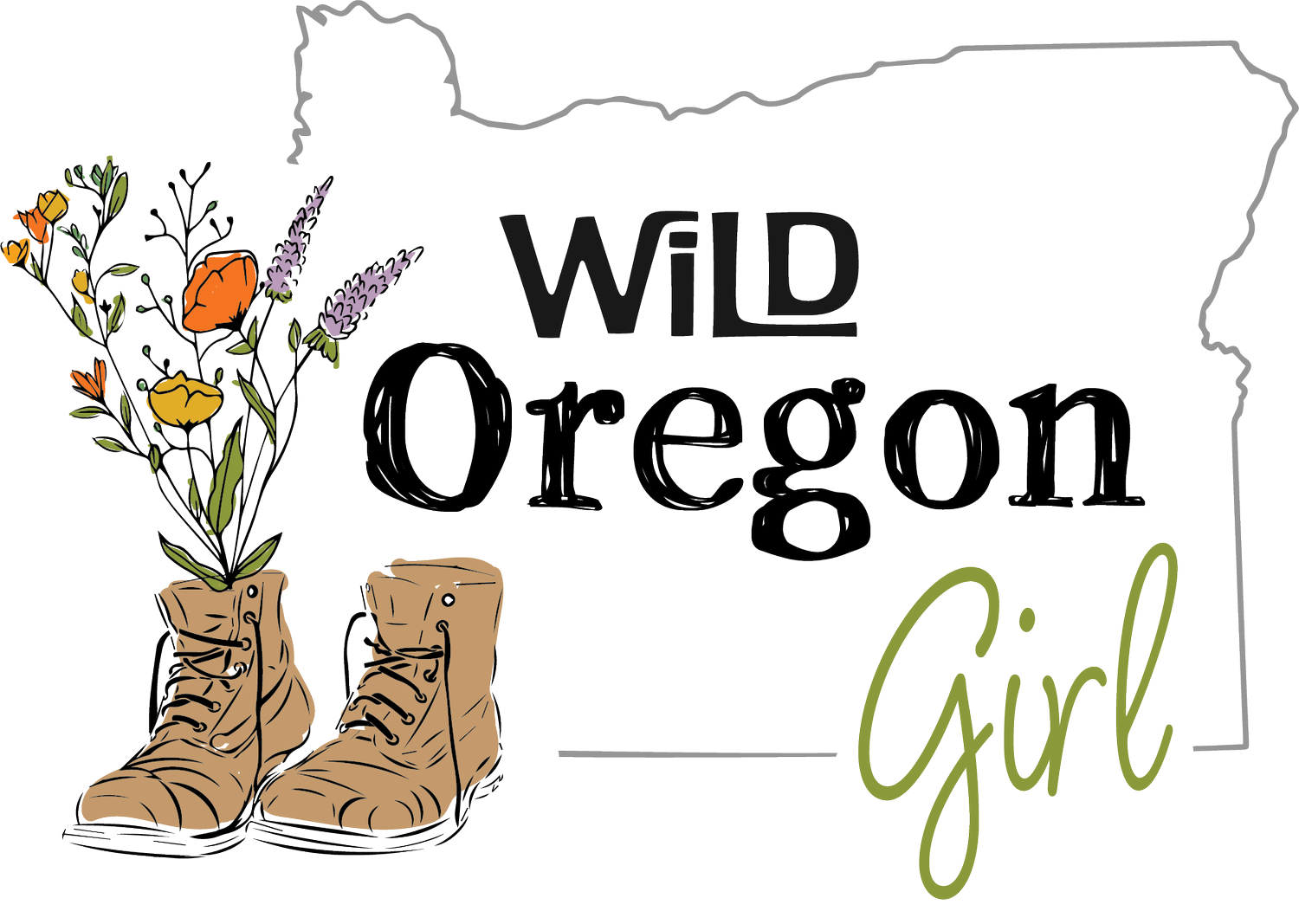The Painted Hills
A delicious layer cake of history, the Painted Hills are a visual timeline dating back 40 million years! Rocks found in The Clarno Area (named for a pioneer crossing near John Day) are from The Eocene Epoch and paint a picture of a sub-tropical grass land. The present day Cascades were not yet formed and so large amounts of rainfall swept over from the Pacific. Most of Western Oregon was underwater. Early horses, primitive rhinos, and crocodiles lived among ferns and palm trees. Volcanic ash from nearby Black and White Buttes constantly fell on the land creating a fossil snapshot of current life. A rise in volcanic activity gave way to the Oligocene and the formation of the Cascade Mountain Range. The ash from volcanic vents east of the Cascades (Grey and Powell Buttes) settled and created the John Day formation. This ash is high in silica and is the cream colored layer of the Painted Hills. The red color is from newer, iron-rich eruptions. The rising Cascades blocked rainfall from the Pacific and the climate became warmer and more dry. A temperate rainforest of sequoia trees stood home to saber-toothed tigers, mini deer, and cow sized rhinos.The vegetation and animals that we recognize today came about 14 million years ago, during the late Miocene. The climate then was much drier than ever before (yet still moist compared to today) and featured fresh water lakes. This ancient setting was home to wolves, camels, ground sloths, and mastodons.
The ash from volcanic vents east of the Cascades (Grey and Powell Buttes) settled and created the John Day formation. This ash is high in silica and is the cream colored layer of the Painted Hills. The red color is from newer, iron-rich eruptions. The rising Cascades blocked rainfall from the Pacific and the climate became warmer and more dry. A temperate rainforest of sequoia trees stood home to saber-toothed tigers, mini deer, and cow sized rhinos.The vegetation and animals that we recognize today came about 14 million years ago, during the late Miocene. The climate then was much drier than ever before (yet still moist compared to today) and featured fresh water lakes. This ancient setting was home to wolves, camels, ground sloths, and mastodons.
 Native Americans have lived in the John Day Valley for 8,000 years. The valley divided the Plateau and Great Basin cultures who both made use of the valley's many plant resources. These people traveled seasonally to harvest different plants and animals across Central Oregon. Discovery of fossil rubbings in a house-pit suggest that the fossils in this area have been studied for centuries.
Native Americans have lived in the John Day Valley for 8,000 years. The valley divided the Plateau and Great Basin cultures who both made use of the valley's many plant resources. These people traveled seasonally to harvest different plants and animals across Central Oregon. Discovery of fossil rubbings in a house-pit suggest that the fossils in this area have been studied for centuries. The fist Euro-Americans to make contact with the Plateau Indians was the Lewis and Clark expedition Team in 1805. Fur trappers followed in 1811 and John Day, a Virginian fur trapper, gave his name to the river where he was robbed and lost forever.In 1864 John M. Drake (of the US Army) made a note that members of his cavalry had discovered fossils in the area. Thomas Condon came to find fossils on Bridge Creek the next year. Over 40,000 fossils have since been collected from this area.
The fist Euro-Americans to make contact with the Plateau Indians was the Lewis and Clark expedition Team in 1805. Fur trappers followed in 1811 and John Day, a Virginian fur trapper, gave his name to the river where he was robbed and lost forever.In 1864 John M. Drake (of the US Army) made a note that members of his cavalry had discovered fossils in the area. Thomas Condon came to find fossils on Bridge Creek the next year. Over 40,000 fossils have since been collected from this area. The gold rush of the 1860's led many to the John Day Valley. Large amounts of sheep and cattle were brought in to feed the miners. Vast concentrations of wild rye, hay, and bunchgrass seemed an endless supply to the herds. The effects of overgrazing, however, had become apparent by the 1920's and 30's. Riparian zones suffered, woody species were introduced, and native species were consequently choked out. Grazing is a hot topic in Oregon and current efforts reflect a more sustainable approach. Grazing in the John Day National Monument stopped in 1980 when the National Park Service put up a fence.
The gold rush of the 1860's led many to the John Day Valley. Large amounts of sheep and cattle were brought in to feed the miners. Vast concentrations of wild rye, hay, and bunchgrass seemed an endless supply to the herds. The effects of overgrazing, however, had become apparent by the 1920's and 30's. Riparian zones suffered, woody species were introduced, and native species were consequently choked out. Grazing is a hot topic in Oregon and current efforts reflect a more sustainable approach. Grazing in the John Day National Monument stopped in 1980 when the National Park Service put up a fence.
 The Painted Hills are located in the John Day Fossil Beds National Monument, about 2 hours from Bend. Head East from Prineville on Highway 26. Turn right on the John Day Highway (Highway 19). The monument offers hiking, picnicking, and nearby Thomas Condon Paleontology Center. The town of John Day lies another 80 miles East.
The Painted Hills are located in the John Day Fossil Beds National Monument, about 2 hours from Bend. Head East from Prineville on Highway 26. Turn right on the John Day Highway (Highway 19). The monument offers hiking, picnicking, and nearby Thomas Condon Paleontology Center. The town of John Day lies another 80 miles East.


